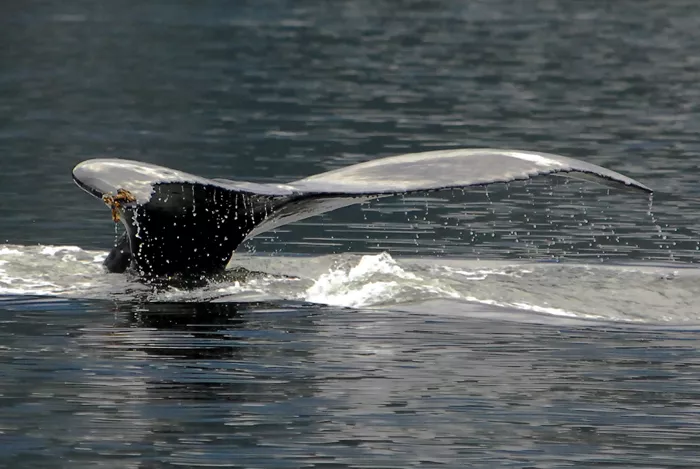Scars reveal humpback migration routes
Analysis of wounds inflicted by cookiecutter sharks and killer whales helping scientists solve the mystery of exact travel routes.
Although humpbacks migrate between their polar feeding grounds and the warmer waters where they breed, the exact routes they take have remained a mystery. By studying the types of scars on humpback whales and how recently they were made, researchers from the University of Pretoria’s Mammal Research Institute can now determine routes the whales took before arriving in their breeding grounds off the west coast of South Africa, Namibia and Gabon.
By analyzing scarring patterns on the humpbacks from cookie-cutter sharks and killer whales and comparing them with the distribution of the two predators, researcher Tess Gridley obtained a better understanding of the waters humpbacks had travelled through en route to the South African coast. The reason is that cookie-cutter sharks prefer warmer water.
We are reasonably confident that cookiecutter sharks, which look particularly gruesome and have razor-sharp teeth for gouging out discs of flesh, prefer living in warmer and temperate waters and avoid the shallower, colder waters of the Benguela ecosystem on the western coast of South Africa and Namibia
In contrast, killer whales, which regularly attack and kill humpback whales, are found all over the ocean. “So if whales have lots of cookiecutter shark bites, there’s a good chance they have recently passed through warm water in offshore areas, and only recently reached the coast,” she added. Humpbacks photographed off the Namibian coast during the winter months had a lot of fresh cookie-cutter shark bites. This suggested that the whales were recent arrivals, having come directly from the waters offshore of the Benguela.
Whales photographed off the South African west coast during summer lacked fresh bites, suggesting the animals spent a long time migrating through the cold Benguela, giving the bites time to heal. Cookiecutter sharks gouge out chunks of flesh from other sharks, fish, whales and dolphins, leaving open wounds as if an ultra-sharp cookie cutter had sliced into the animals’ flesh. The shark attaches itself to its prey with suctorial lips, anchors itself with its upper teeth and slices into the animal’s flesh with its lower teeth, rotating its body to make a circular cut.
- Log in to post comments
























